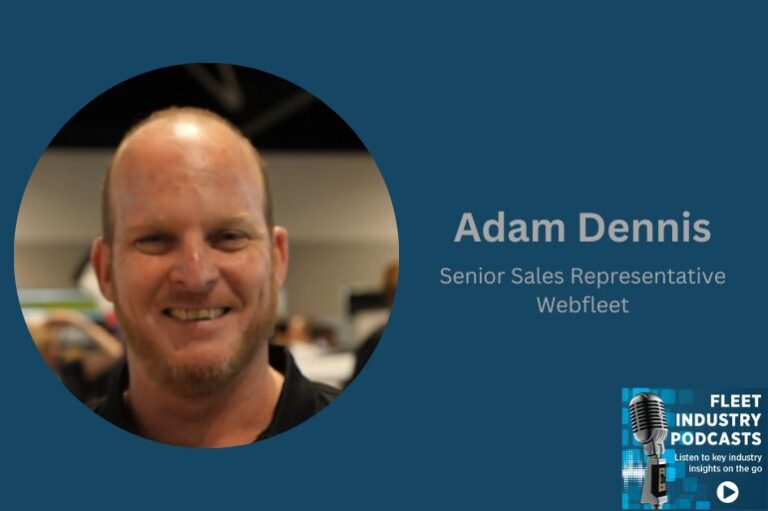Adam Dennis, electric vehicle specialist and senior sales representative at Bridgestone-held telematics provider Webfleet talks with Fleet News Group podcast host Caroline Falls about a platform his group launched in the US, the rapid growth of EVs, and the imperative fleets are experiencing to make the shift to cut emissions.
The EV Services Platform unveiled by Webfleet at the Consumer Electronics Show in Las Vegas in January integrates data from a range of providers, including charging equipment group CTEK and location specialist TomTom. It was hailed as a game changer for fleet customers to better manage their operations, including allocation of vehicles for specific jobs and management of battery charging.
“We’ll capture all the data from the charging events … give you good battery analytics, give you better ideas on when and how to charge. You can assign profiles to your charging stations so that they only charge when you’re collecting green power, or they only charge in off peak times,” said Dennis, adding, “This will just allow us to offer larger fleet owners a much wider solution package.”
Dennis talks about the exponential growth of EV adoption, growing from about 1 percent of new car sales in Australia in 2020 to around 8 percent last year.
“And I think it’s only going to get faster, especially as the the charging infrastructure meets our needs.”
Dennis said he expects EV sales as a proportion of new car sales to surge to 12 or 14 percent in the next 12 months, and even more dramatically over the next three years.
“I reckon you’ll see very few diesel or petrol passenger cars or vans on the road by 2028-2029. I think by 2030 There’ll be almost none.”
Dennis said improvements in battery technology and development of charging infrastructure, particularly fast charging networks on highways and arterial roads, will pave the way for greater adoption.
To be sure, the imperative to cut emissions is driving the transition.
“A lot of businesses understand the need to move to lower carbon emissions transport, and they’re doing it,” said Dennis, adding that knowledge on how to transition was maturing.“They know what they need, what they don’t want. Vehicles, vans that can only do 250k in the real world, between charges suits some businesses, not others. So it’s more about waiting for battery capacity to improve a little,” which will, he said, “happen in the coming years.”







